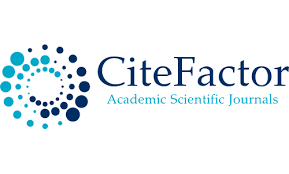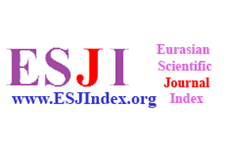MAXIMIZING ECONOMIC EFFICIENCY: STRATEGIES FOR LAND USE OPTIMIZATION IN SURKHANDARYA REGION FARMS
Khujakeldiev Chorshanbi
Scientific supervisor Doctor of Philosophy in Economics
Altieva Mukhabbat
2nd year graduate student of Termiz University of Economics and Service
Keywords: Surkhandarya, agriculture, economic efficiency, land use optimization, precision agriculture, crop diversification, irrigation practices, agroforestry, climate-smart agriculture, financial resources, collaborative initiatives.
Abstract
This article explores strategies for maximizing economic efficiency through land use optimization in Surkhandarya region farms. Surkhandarya, located in southern Uzbekistan, possesses fertile lands with significant agricultural potential. However, to enhance economic returns while ensuring sustainability, it is crucial to implement efficient land use practices. The article discusses various strategies tailored to Surkhandarya's agricultural landscape, including precision agriculture, crop diversification, efficient irrigation practices, agroforestry, climate-smart agriculture, access to financial resources, and collaborative initiatives. These strategies aim to improve productivity, reduce input costs, mitigate risks, and foster resilience in the face of climate variability and market fluctuations. By adopting a multifaceted approach, Surkhandarya farmers can optimize land use, enhance economic viability, and contribute to the region's agricultural development.
References
Tilman, D., Balzer, C., Hill, J., & Befort, B. L. (2011). Global food demand and the sustainable intensification of agriculture. Proceedings of the National Academy of Sciences, 108(50), 20260–20264. https://doi.org/10.1073/pnas.1116437108
Pretty, J., Benton, T. G., Bharucha, Z. P., Dicks, L. V., Flora, C. B., Godfray, H. C. J., Goulson, D., Hartley, S., Lampkin, N., Morris, C., Pierzynski, G., Prasad, P. V. V., Reganold, J. P., Rockström, J., Smith, P., Thorne, P., & Wratten, S. (2018). Global assessment of agricultural system redesign for sustainable intensification. Nature Sustainability, 1(8), 441–446. https://doi.org/10.1038/s41893-018-0114-0
Campbell, B. M., Thornton, P., Zougmoré, R., van Asten, P., & Lipper, L. (2014). Sustainable intensification: What is its role in climate smart agriculture? Current Opinion in Environmental Sustainability, 8, 39–43. https://doi.org/10.1016/j.cosust.2014.08.003
Tittonell, P., & Giller, K. E. (2013). When yield gaps are poverty traps: The paradigm of ecological intensification in African smallholder agriculture. Field Crops Research, 143, 76–90. https://doi.org/10.1016/j.fcr.2012.10.007
Foley, J. A., Ramankutty, N., Brauman, K. A., Cassidy, E. S., Gerber, J. S., Johnston, M., Mueller, N. D., O’Connell, C., Ray, D. K., West, P. C., Balzer, C., Bennett, E. M., Carpenter, S. R., Hill, J., Monfreda, C., Polasky, S., Rockström, J., Sheehan, J., Siebert, S., … Zaks, D. P. M. (2011). Solutions for a cultivated planet. Nature, 478(7369), 337–342. https://doi.org/10.1038/nature10452
Sabinabonu Jahongirovna Azimova, & Manzura Axatovna Asatova (2021). YER RESURSLARIDAN FOYDALANISHNING IQTISODIY, HUQUQIY ASOSLARI VA MUAMMOLAR. Academic research in educational sciences, 2 (11), 866-870.
Бабаниязович, А.А. (2024). ЗНАЧЕНИЕ И СУЩНОСТЬ МАРКЕТИНГА В МАЛОМ БИЗНЕСЕ И ПРЕДПРИНИМАТЕЛЬСТВЕ. Господарка и инновации. , (45), 246-250.
Бабаниязович А.А., Алибековна А.З., Алибековна А.Ф. (2024). RAQAMLI IQTISODIYOTNING ISTIQBOLLARI VA REKLAMADAGI AHAMIYATI. ИДЖОДКОР О'КИТУВЧИ , 4 (37), 154-157.
Бабаниязович А.А., Бахрамовна YLT и Чори о'г TRJ (2024). ЗНАЧИМОСТЬ СОВРЕМЕННОГО МЕНЕДЖМЕНТА В БАНКЕ. Журнал универсальных научных исследований , 2 (2), 196–199.
Бабаниязович А.А., Алибековна А.З., Алибековна А.Ф. (2024). РОЛЬ ЭКОНОМИЧЕСКОГО УПРАВЛЕНИЯ В ФИНАНСОВЫХ И БАНКОВСКИХ РЕФОРМАХ. Международный междисциплинарный журнал исследований и разработок , 11 (01).
Бабаниязович, А.А. (2023). МИЛЛИЙ ИКТИСОДИЕТНИНГ МАНАВИЙ АСОСЛАРИ. ЖУРНАЛ ИННОВАЦИЙ В НАУЧНЫХ И ОБРАЗОВАТЕЛЬНЫХ ИССЛЕДОВАНИЯХ , 6 (3), 467-470.
Бабаниязович, А.А. (2023). Мамлакатимизда саноат салохиятини ривойлантириш. Журнал универсальных научных исследований , 1 (3), 86-89.
Babaniyazovich, A. A. (2023). MILLIY IQTISODIYOTNI RIVOJLANTIRISHDA TARKIBIY OʻZGARISHLARNING AHAMIYATI VA OʻRNI. PEDAGOG, 6(3), 178-182.
Бабаниязович, А.А. (2023). СОХАЛАР БО 'ЙИЧА МАРКЕТИНГ. УЗБЕКИСТОНДА ФАНЛАРАРО ИННОВАЦИЯЛАР ВА ИЛМИЙ ТАДКИКОТЛАР ЖУРНАЛИ , 2 (17), 636-639.
Бабаниязович, А.А. (2023). Makroiqtisodiy ko 'rsatgichnilar или 'zgarishiga jiddiy ta 'sir etuchi global omillar va ularni o 'rganish yo 'llari. Журнал универсальных научных исследований , 1 (3), 172–174.
Axmedov, A. (2023). KICHIK BIZNES VA TADBIRKORLIK FAOLIYATINING RIVOJLANISHIDA MARKETING SOHASINING AHAMIYATI VA UNI TAKOMILLASHTIRISH YOʻLLARI. Инновационные исследования в современном мире: теория и практика, 2(8), 56-58.
Babaniyazovich, A. A. (2023). HR MANAGEMENT DIFFERENCIES AROUND DIFFERENT COUNTRIES. Ethiopian International Journal of Multidisciplinary Research, 10(09), 433-438.
AKHMEDOV, A. (2020). ON SPECTRA OF MULTIPLE BAND GENERALIZED DIFFERENCE OPERATOR-MATRICES WITH RETURNED SEQUENCES. CONTROL AND OPTIMIZATION WITH INDUSTRIAL APPLICATIONS, 62.
Babaniyazovich, A. A. (2023). THE IMPACT OF ARTIFICIAL INTELLIGENCE ON HUMAN LIFE IN THE FUTURE. International Multidisciplinary Journal for Research & Development, 10(10).
Babaniyazovich, A. A., & Abdullayevich, J. S. (2023). INCREASING FINANCIAL LITERACY IN RURAL AREAS. American Journal of Public Diplomacy and International Studies (2993-2157), 1(4), 1-3.
Babaniyazovich, A. A. (2022). Ways to increase the importance and efficiency of crop rotation in agriculture.
Babaniyazovich, A. A., Bakhtiyarovich, A. S., & Abbos G'affor o'g, J. (2023). FACTORS LEADING TO DRINKING WATER SHORTAGE AND DROUGHT IN UZBEKISTAN. PEDAGOGS, 46(2), 118-123.
Бабаниязович, А.А. (2022). Пути повышения значения и эффективности севооборота в сельском хозяйстве.
Бабаниязович, А.А. (2023). Makroiqtisodiy ko'rsatgichnilar или 'zgarishiga jiddiy ta 'sir etuchi global omillar va ularni o 'rganish yo 'llari. Журнал универсальных научных исследований , 1 (3), 172–174.

















